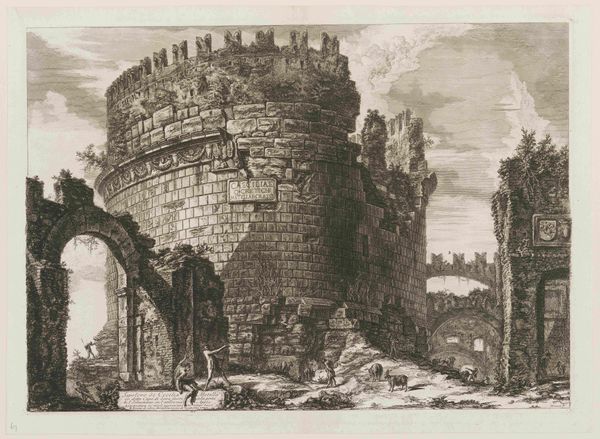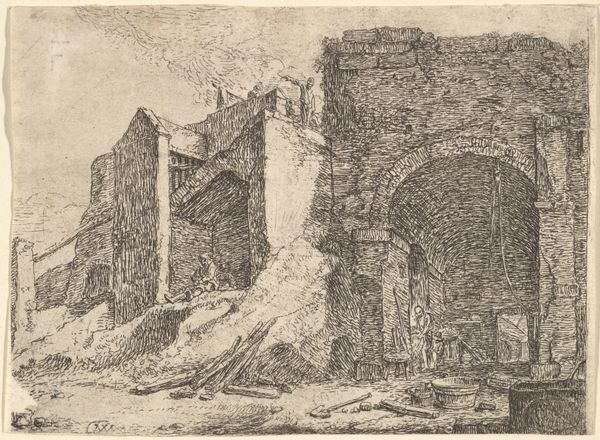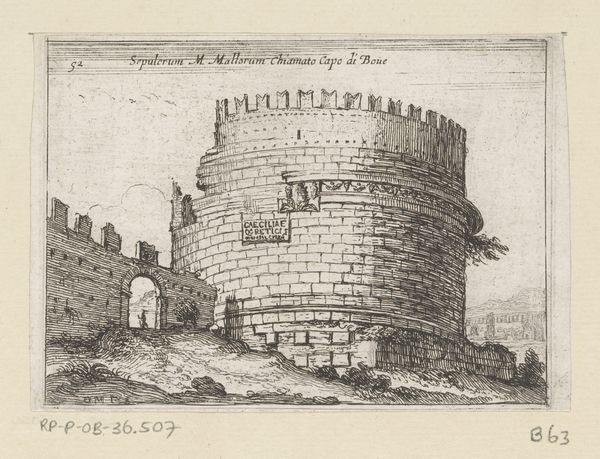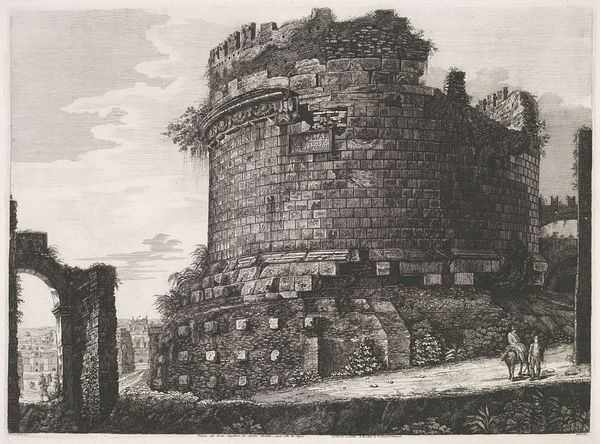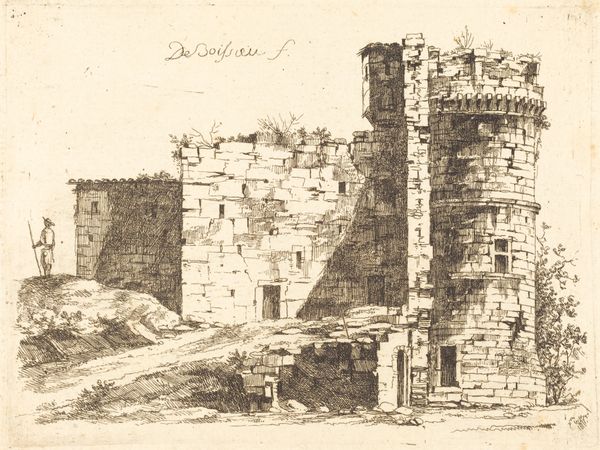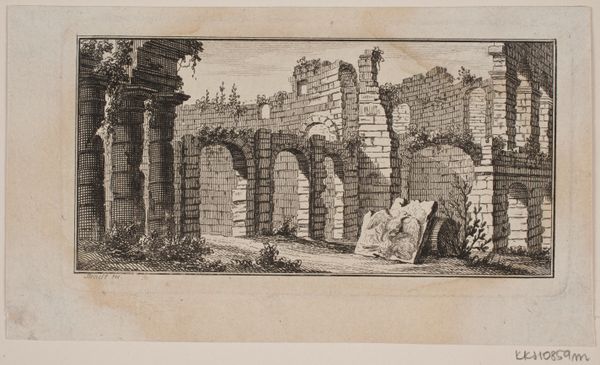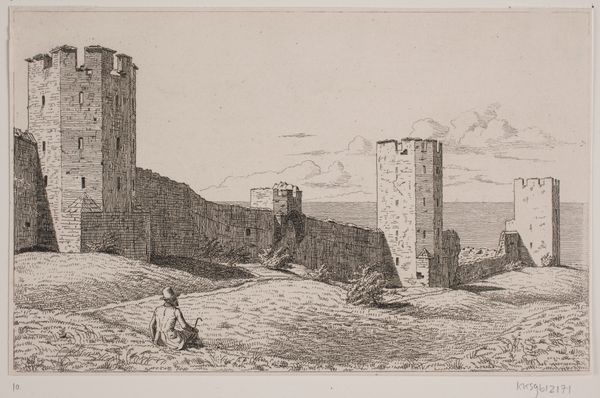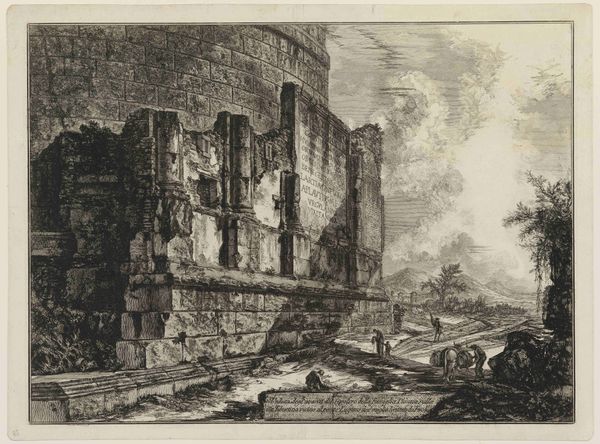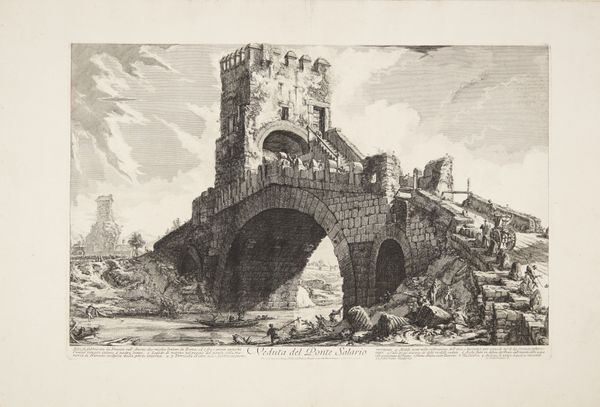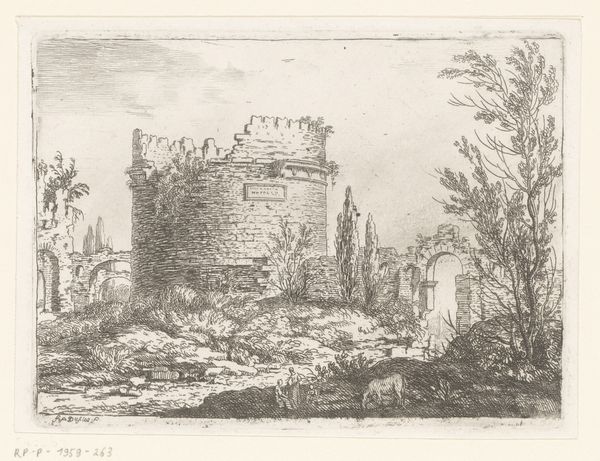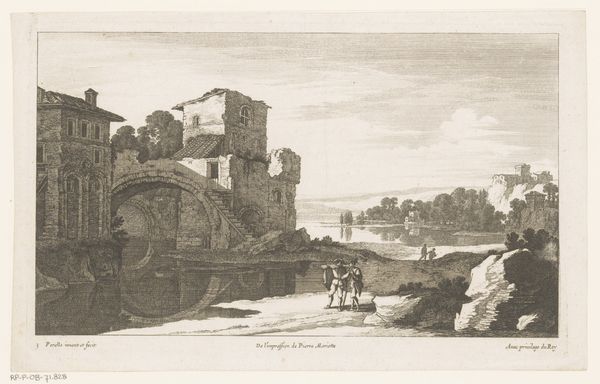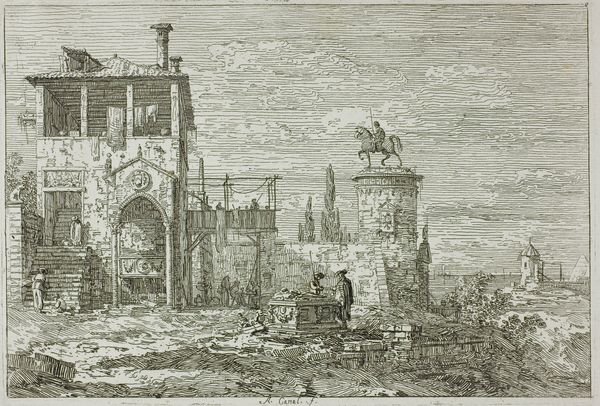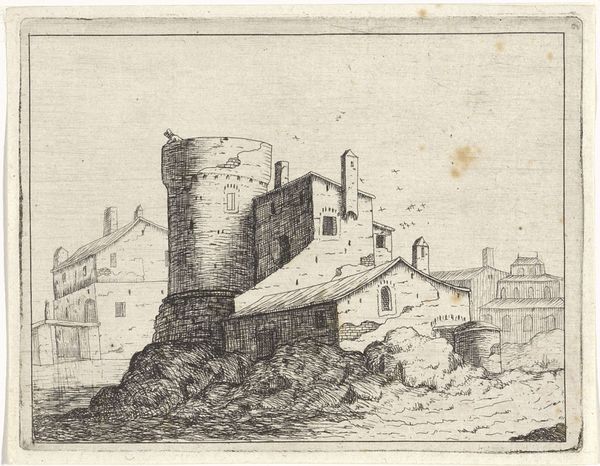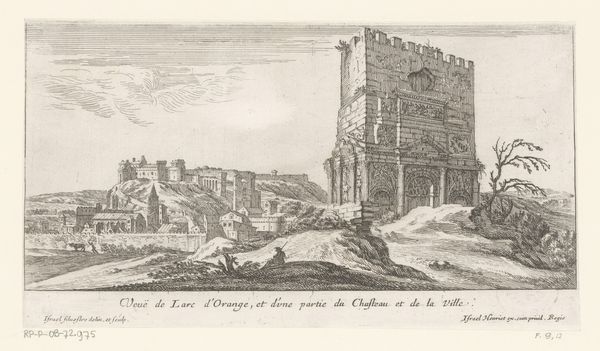
The tomb of Caecilia Metella, from Vedute di Roma (Roman Views) 1757 - 1767
0:00
0:00
drawing, print, etching, engraving, architecture
#
drawing
# print
#
etching
#
landscape
#
romanesque
#
cityscape
#
history-painting
#
engraving
#
architecture
Dimensions: Sheet: 27 3/4 x 20 7/8 in. (70.5 x 53 cm) Plate: 24 7/16 x 17 5/16 in. (62 x 44 cm)
Copyright: Public Domain
Curator: Welcome. We are looking at Giovanni Battista Piranesi's "The tomb of Caecilia Metella, from Vedute di Roma," an etching, engraving, and print completed between 1757 and 1767. It’s part of the Vedute di Roma series, known for its detailed views of Rome. What are your initial impressions? Editor: Monumental desolation! It's a towering, crumbling fortress dominating a wide shot with these teeny, tiny figures milling about. Immediately, I think of grand ambitions swallowed by the slow churn of time and neglect. Curator: Indeed. Note the interplay between the geometric precision of the tomb itself and the organic decay overtaking it. Piranesi masterfully uses line and shadow to emphasize the architectural structure while acknowledging its state of ruin. Semiotically, the ruin itself is as meaningful as the structure of the mausoleum. Editor: It’s a memento mori etched in stone, literally and figuratively. Even those touches of idyllic landscape and everyday activities below barely soften the starkness. And look at that Romanesque tower transformed into something almost gothic, burdened by years and weather. Curator: Precisely. Piranesi wasn't just documenting; he was interpreting. The disproportionate scale and dramatic lighting create a narrative – a tension between past glory and present reality. Consider how this work invites us to reflect on power, memory, and the transience of human endeavor. Editor: Transience, yes! It makes me think about how we all build our little towers, convinced they'll last forever and then—wham—the vines creep up and everything starts to erode. You almost want to shout at those oblivious figures, "Don't you see what's happening here?" Curator: An excellent point! I also find myself pondering Piranesi's choices in manipulating scale to achieve a certain expressive aim here. I consider what those choices say about 18th-century conceptions of antiquity. Editor: For me, I’m left with this feeling that even in decay, there’s still a strange sort of...beauty. It’s haunting, you know? A beautiful haunting. Curator: An insightful sentiment and a perfect way to distill the impact of Piranesi's print. Thanks for your insights. Editor: Thanks! This ruin will definitely stick with me.
Comments
No comments
Be the first to comment and join the conversation on the ultimate creative platform.
